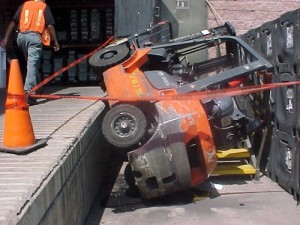 The investigative report should answer six key questions: who, what, when, where, why, and how. Fact should be distinguished from opinion, and both should be presented carefully and clearly. The report should include thorough interviews with everyone with any knowledge of the incident. A good investigation is likely to reveal several contributing factors, and it probably will recommend several preventive actions.
The investigative report should answer six key questions: who, what, when, where, why, and how. Fact should be distinguished from opinion, and both should be presented carefully and clearly. The report should include thorough interviews with everyone with any knowledge of the incident. A good investigation is likely to reveal several contributing factors, and it probably will recommend several preventive actions.
Tag: osha
OSHA announces Top 10 most-cited violations for 2014
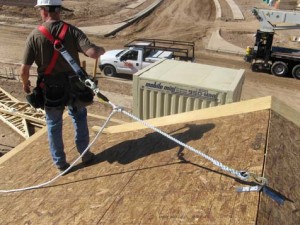 For the fourth year in a row, OSHA’s Fall Protection Standard (1926.501) is the agency’s most frequently cited violation.
For the fourth year in a row, OSHA’s Fall Protection Standard (1926.501) is the agency’s most frequently cited violation.
The entire list is as follows:
- Fall Protection in Construction (1926.501)
- Hazard Communication (1910.1200)
- Scaffolding in Construction (1926.451)
- Respiratory Protection (1910.134)
- Lockout/Tagout (1910.147)
- Powered Industrial Trucks (1910.178)
- Electrical – Wiring Methods (1910.305)
- Ladders in Construction (1926.1053)
- Machine Guarding (1910.212)
- Electrical – General Requirements (1910.303)
via OSHA announces Top 10 most-cited violations for 2014 | 2014-09-16 | Safety+Health Magazine.
The Real Costs of Accidents
 Accidents are more expensive than most people realize because of the hidden costs. Some costs are obvious — for example, Workers’ Compensation claims which cover medical costs and indemnity payments for an injured or ill worker. These are the direct costs of accidents.
Accidents are more expensive than most people realize because of the hidden costs. Some costs are obvious — for example, Workers’ Compensation claims which cover medical costs and indemnity payments for an injured or ill worker. These are the direct costs of accidents.
But what about the costs to train and compensate a replacement worker, repair damaged property, investigate the accident and implement corrective action, and to maintain insurance coverage? Even less apparent are the costs related to schedule delays, added administrative time, lower morale, increased absenteeism, and poorer customer relations. These are the indirect costs — costs that aren’t so obvious until we take a closer look.
Studies show that the ratio of indirect costs to direct costs varies widely, from a high of 20:1 to a low of 1:1. OSHA’s approach is shown here and says that the lower the direct costs of an accident, the higher the ratio of indirect to direct costs.
Evacuation Plans and Procedures
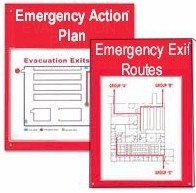 An emergency action plan (EAP) is usually a written document required by particular OSHA standards. For smaller organizations, the plan does not need to be written and may be communicated orally if there are 10 or fewer employees [29 CFR 1910.38(b)]. The purpose of an EAP is to facilitate and organize employer and employee actions during workplace emergencies. The elements of the plan must include, but are not limited to:
An emergency action plan (EAP) is usually a written document required by particular OSHA standards. For smaller organizations, the plan does not need to be written and may be communicated orally if there are 10 or fewer employees [29 CFR 1910.38(b)]. The purpose of an EAP is to facilitate and organize employer and employee actions during workplace emergencies. The elements of the plan must include, but are not limited to:
- Means of reporting fires and other emergencies
- Evacuation procedures and emergency escape route assignments
- Procedures to be followed by employees who remain to operate critical plant operations before they evacuate
- Procedures to account for all employees after an emergency evacuation has been completed
- Rescue and medical duties for those employees who are to perform them
- Names or job titles of persons who can be contacted for further information or explanation of duties under the plan
via Evacuation Plans and Procedures eTool | Emergency Action Plan Expert System – Introduction.
Changes to the OSHA Illness & Injury Recordkeeping Standard
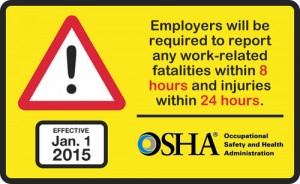 Starting January 1, 2015 the new federal OSHA changes will require employers to file a detailed report within eight hours of fatal workplace accidents.
Starting January 1, 2015 the new federal OSHA changes will require employers to file a detailed report within eight hours of fatal workplace accidents.
Severe on-the-job injuries that do not result in death but require hospitalization must be reported within 24 hours, Such reports must be filed regardless of the size of the business.
Currently, the regulations require such reports only if a worker was killed or three or more workers were hospitalized as a result of a workplace accident. The new 24-hour reporting requirement includes all work-related hospitalizations, amputations or loss of an eye. All employers, including those partially exempted by reason of company size or industry classification, will be required to comply with the new severe injury and illness reporting requirements.
The new federal regulation maintains the current exemption for any employer with 10 or fewer workers from the requirement to maintain the 300 logs of worker injuries and illnesses. The new rule also updates the list of employers partially exempt from OSHA recordkeeping requirements. https://www.osha.gov/recordkeeping/ppt1/RK1exempttable.html
via LARA – Changes to the OSHA Illness & Injury Recordkeeping Standard.
Accident Investigation
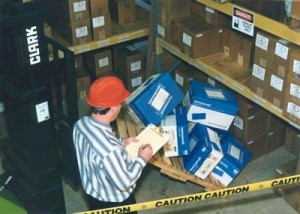 Thousands of accidents occur throughout the United States every day. The failure of people, equipment, supplies, or surroundings to behave or react as expected causes most of them. Accident investigations determine how and why these failures occur. By using the information gained through an investigation, a similar, or perhaps more disastrous, accident may be prevented. It is important to conduct accident investigations with prevention in mind.
Thousands of accidents occur throughout the United States every day. The failure of people, equipment, supplies, or surroundings to behave or react as expected causes most of them. Accident investigations determine how and why these failures occur. By using the information gained through an investigation, a similar, or perhaps more disastrous, accident may be prevented. It is important to conduct accident investigations with prevention in mind.
OSHA Announces New Injury Reporting Rules
 The Occupational Safety and Health Administration (OSHA) announced a final rule Sept. 11, 2014, revising the requirements for reporting work-related fatality, injury and illness information. The rule also updates the list of employers partially exempt from OSHA record-keeping requirements.
The Occupational Safety and Health Administration (OSHA) announced a final rule Sept. 11, 2014, revising the requirements for reporting work-related fatality, injury and illness information. The rule also updates the list of employers partially exempt from OSHA record-keeping requirements.
The current regulation requires employers to report all work-related fatalities and in-patient hospitalizations of three or more employees within eight hours of the event.
The new rule retains the requirement to report all fatalities to OSHA within eight hours but amends the regulation to require employers to report all work-related in-patient hospitalizations, as well as amputations and losses of an eye, to OSHA within 24 hours.
The reporting regulations affect all employers covered by OSHA, even those who are partially exempt from maintaining injury and illness records.
The changes go into effect Jan. 1, 2015, for workplaces under federal OSHA jurisdiction. Employers located in states that operate their own safety and health programs should check with their state plan for the implementation date of the new requirements.
Safety and Health Management Systems
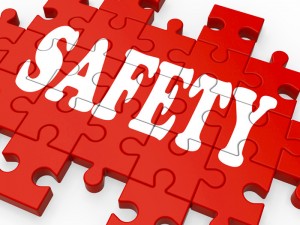 What is a Safety and Health Program and where does it fit into my management system?
What is a Safety and Health Program and where does it fit into my management system?
If your team wants to reduce accidents, injuries, illnesses, and their related costs, everyone must place as much emphasis on safety and health issues as they place on other core management issues, such as production, sales, and quality control. To be most effective, safety and health must be balanced with, and incorporated into, the other core business processes.
“Safety First” may sound good, but in reality, safety should not be considered separately. Rather, it must become a basic value of your company. Change “Safety First” to “Safe production is our only standard.” This emphasizes the idea that it’s fine to produce as hard and as fast as possible, as long as it can be done safely.
Fall Protection
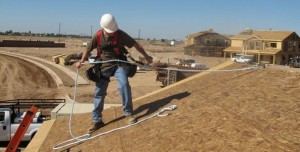 Why is fall protection important?
Why is fall protection important?
Falls are among the most common causes of serious work related injuries and deaths. Employers must set up the work place to prevent employees from falling off of overhead platforms, elevated work stations or into holes in the floor and walls.
What can be done to reduce falls?
Employers must set up the work place to prevent employees from falling off of overhead platforms, elevated work stations or into holes in the floor and walls. OSHA requires that fall protection be provided at elevations of four feet in general industry workplaces, five feet in shipyards, six feet in the construction industry and eight feet in longshoring operations. In addition, OSHA requires that fall protection be provided when working over dangerous equipment and machinery, regardless of the fall distance.
To prevent employees from being injured from falls, employers must:
- Guard every floor hole into which a worker can accidentally walk (using a railing and toe-board or a floor hole cover).
- Provide a guard rail and toe-board around every elevated open sided platform, floor or runway.
- Regardless of height, if a worker can fall into or onto dangerous machines or equipment (such as a vat or acid or a conveyor belt) employers must provide guardrails and toe-boards to prevent workers from falling and getting injured.
- Other means of fall protection that may be required on certain jobs include safety and harness and line, safety nets, stair railings and hand rails.
OSHA requires employers to:
- Provide working conditions that are free of known dangers.
- Keep floors in work areas in a clean and, so far as possible, a dry condition.
- Select and provide required personal protective equipment at no cost to workers.
- Train workers about job hazards in a language that they can understand.

